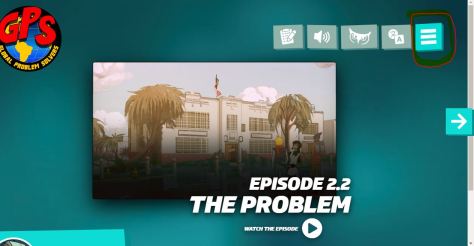When attending conferences, especially large ones like ISTE, you have your plan of attack laid out (for the most part). You know the people you want to see, hangout with or the keynotes that will be featured. You have downloaded the conference app or schedule and tallied out the daily sessions you’ll attend. You even hope to make your way to the vendors’ or exhibitors’ hall in hopes of some highlighters, sharpies, pens, buttons, stickers, post-its, swag or cool giveaways. The thing you hate most is the salesman trying to sell you a presentation or product knowing good and well you have no purchasing power. When in buildings and conferences with teachers then….think like a teacher.
Before arriving in Chicago, I was made aware of a launch that would take place and was hired by World Changing along with some other educators to assist with the launch and have dynamic discourse with educators alike. We were never asked to market or sell a product, collect teacher’s names but simply have a conversation about how to help younger learners develop some life skills that ultimately would impact the greater community.
Now an influencer, could be described as someone that has the ability to lead others and convince them to follow. Although, I do not claim to be an influencer, I do recognize my strength on being able to huddle a crowd together and get them to listen and follow. This skill allowed me to formulate a team that could assist Cisco CSR (a subdivision of the larger corporate organization) with the launch of GPS the Series .
Oh boy! I know you are saying here comes another product but GPS the Series is a supplement to the curriculum not a replacement for it.
What I really liked about this series was what I could see at face value: multicultural teenage characters, the emphasis of real life talent and skills amplified as super powers, and real impact made by the youngest of citizens. As I took a deeper dive, my mind began to think about the Season 1 Trailer and its episodes on the Water Wells in Malawi (Africa) and how this could pair up nicely with a Biology, Chemistry or Engineering lesson units. In Season 2: The Problem, the issue of natural disasters has unfortunately become an all too common theme in the United States over the past several years. Lessons centered around population, habitats and ecosystems, economics, electricity and power, transportation, safety and survival plans, community and collaboration came to mind. What types of dialogue do you believe your students could engage in and how might you assess their understanding? Perhaps through academic language, the ability to apply it across subjects, or through reading, listening and speaking.

When navigating the site, you’ll see that Season 1 and 2 are each broken down into 7 episodes that run under 4 minutes each. You can access it from the navigation icon on the top right of your screen (see image above). This is quick and easy because it allows you to integrate into class time as a bell ringer , dedicated station or even in a flipped model from home, if a device and internet are accessible. The episodes are followed by 2 sets of questions connected to the real world to help facilitate the dialogue in class or through another medium like FlipGrid.
Each episode is broken down in steps, almost similar to how you would facilitate students through their thinking.
Step 1: The Problem
Step 2 : Ideate Solutions
Step 3: Integrate Technology
Step 4: Think of a Business Plan (so it’s viable and sustainable)
Step 5: Test it out in an authentic way to measure and assess results and impact
Step 6: Celebrate wins ( both great or small)
A downloadable Teacher’s Guide (about 35 pages total) accompanies the full season. You can print specifically the pages you need for the episode you are watching. These are filled with additional resources you could use, questions, objectives, and a wealth of connections that are authentic and meaningful to the learner.
There are also storyboards and scripts that can be downloaded for those students that are great at visual storytelling or own artistic skills. Think of how to engage them better but also how you can help improve some literacy skills simultaneously.
All of these resources can be found in English directly on the site at www.gpstheseries.com but you can also use Google Translate to place the pdf into a language you and your students can understand.
Here is a quick video tutorial to show you how to translate documents into another language.
Think how you can transform your classroom and teaching this fall for the SY 2018-19 and impact students to problem solve, think critically and impact communities on a local, national or global scale. This program doesn’t cost you a thing to try and you know we all love FREE!


2 thoughts on “Scratching Below the Surface of GPS the Series”